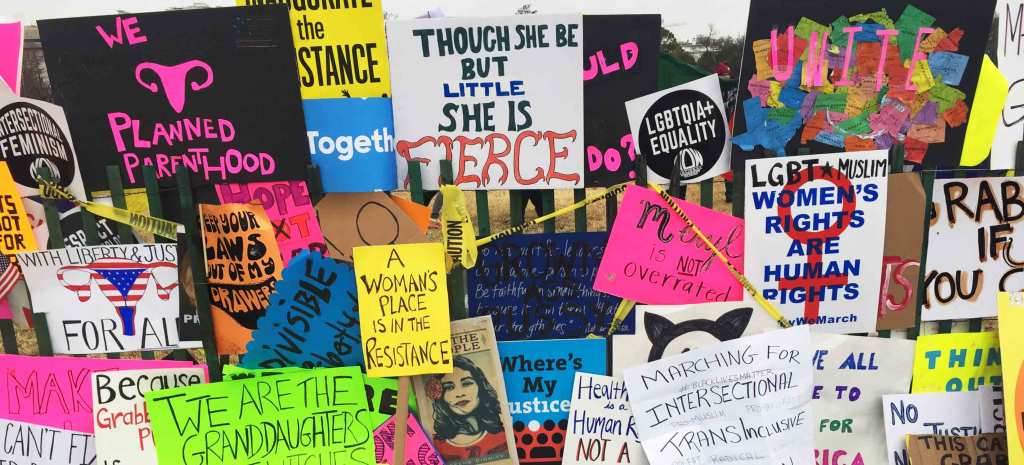
On Saturday, January 21, over 5 million people joined public demonstrations as part of the Women’s March on Washington and its affiliated marches around the world, speaking out for women’s rights, human rights, diversity, and democracy. For some participants, it was the first time they had exercised their right to peaceful protest. For others, it was just one historic march in a lifetime of activism. As the sun set and people boarded buses and subways to begin their journeys home, the central question on their minds and in their conversations was, How do we harness the power of this moment, and turn it into an inclusive and impactful movement?
About that word inclusive: When it comes to the movement for women’s human rights, it refers not only to the importance of diversity but also to the necessity of intersectionality—that is, to building solidarity and understanding across identities and the wide range of experiences tied to those identities.
This conception of intersectionality was central to the massive rally that preceded the march in Washington. “I cannot survive on righteous anger alone,” the writer, television host, and trans rights activist Janet Mock told the crowd. “[Our approach to freedom] must extend beyond ourselves. I know with surpassing certainty that my liberation is directly linked to the liberation of the undocumented trans Latina yearning for refuge. The disabled student seeking unequivocal access. The sex worker fighting to make her living safely.”
In other words, the power of the Women’s March cannot be sustained without a vast and diverse array of people coming together to resist the sources not only of their own oppression but also of each other’s. As Audre Lorde famously said, “I am not free while any woman is unfree, even when her shackles are very different from my own.” To build a base of support for mass mobilization on a wide range of causes, this kind of solidarity is crucial. Without it, the movement will remain weak, as individuals retreat into the silos of issues they see as particular to their own identities and experiences.
Even if we achieve this ideal of inclusivity, the second half of the initial question remains: How do we make this movement impactful? As speakers at the Women’s March linked women’s equality not only to reproductive and gender justice but also to immigration, environmental, economic, native, racial, religious, ethnic, education, and criminal justice, they rejected the idea that women represent a narrow set of similar interests (so-called women’s issues). As Senator Kamala Harris of California told the crowd gathered near the Capitol, “We are tired, as women, of being relegated to simply being thought of as a particular constituency or demographic.” In reality, those participating in today’s women’s movement reflect a broad set of interests that vary widely within the movement itself.
During presidential elections, our majoritarian system forcibly aggregates those interests into two distinct parties. But American democracy also encourages more pluralistic forms of civic engagement. Regardless of who they voted for, individuals pursuing justice for women can use the freedoms of speech and association—cornerstones of liberal democracy—to hold their elected officials accountable to representing them. All Americans can write letters and place phone calls to their elected officials, educate themselves and others about the issues at hand, and seek to influence others through advocacy. The Women’s March on Washington was full of appeals for participants to exercise the power of these democratic rights. As Linda Sarsour, one of the march’s organizers, told the crowd, “You are what democracy looks like.”
In the weeks since the march, people seem to have taken Sarsour’s words to heart, as countless resources and events have been organized for Americans to continue the work of the women’s movement. At those rallies, informational panels, phone banks, and letter-writing parties, I have been inspired by the solidarity shown by women and men who have wildly different experiences but are united in their belief that this country is at its best when it embraces that diversity of perspectives and identities, and recognizes it as one of our democracy’s greatest strengths.
Specific events and outrages understandably fuel bursts of participation, as we’re seeing now. But perhaps the best thing we can do to build on the momentum of the Women’s March in Washington (and around the US and the world) is to embrace these actions as an essential part of participating in our democracy, and therefore a constant in our lives—no matter who is in the White House.